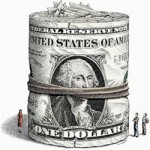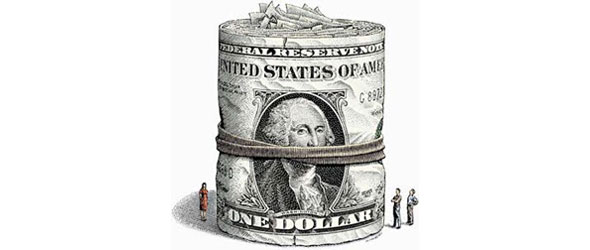Inflation: a Menace or a Mirage?
An inflation panic is under way, sending the prices of even the safest bonds into free-fall. Ten-year US Treasuries have fallen 7 per cent in value since late last year, ten-year German Bunds by 9 per cent since mid-2010. Are we really heading into a period of strongly rising prices, and how ought this to affect our personal investment strategy?The panic has been triggered by strong industrial commodity prices and an explosion in the prices of basic foodstuffs such as wheat, corn and soybeans. The Food & Agricultural Organization recently warned of a global “food price shock” as its index of farm prices hit a new record.
These are driving up consumer prices. This is especially so in emerging economies, where because of still-low incomes, food is a major part of families’ spending. It accounts for one-half of the index basket of consumer spending in India and one-third in China, compared to just one-tenth in Britain and Germany, even less in America.
But the bubble in food prices is largely due to crop failures brought about by adverse weather conditions in Russia, South America and the US, in particular the Pacific warm-ocean cyclical phenomenon called La Niña, which has been at its strongest in 30 years.
Although there will be other crop failures in future, and there is reason to believe that long-term growing demand for food is likely to be price-supportive, it’s a near-certainty that as more normal conditions return to the farmlands, prices of agricultural commodities will fall, deflating the bubble.
Industrial commodities are less important as a driver of inflation. As the inputs of heavy industry (iron ore and coking coal for steel), transportation and petrochemicals (oil and gas used as fuel and feedstock), and construction (copper and aluminium), go up they do raise costs – which eventually have to be passed on to customers.
But with few exceptions, they are a relatively small proportion of costs compared to those of labour and capital.
Central bankers fear what are called “second-round effects” – that higher prices for food and industrial inputs will feed through to raise prices generally, which in turn will drive workers to get compensating rises in their incomes, the start of what could develop into a spiral of rising prices.
That looks very unlikely to me.
When there is a pool of unemployed and/or inexpensive workers on which employers can draw, or they can substitute technology for human input, they are under no pressure to raise their labour costs, no pressure to pass on those costs in their prices.
The effect of rising prices for food (or one-off factors such as rises in sales taxes) is to squeeze consumer spending-power. They destroy demand. Far from being inflationary, they are deflationary.
Now it’s true that in some parts of the emerging world – China’s industrialized coastal areas, for example – labour costs are rising and they are inflationary. But those are the exceptions.
In the advanced economies the impact of recession, including the continuous pressure on businesses to sustain or improve profitability by tight control of labour costs, seeking growth through greater use of low-cost offshore factories and of infotech, means there is a huge pool of unemployed or under-employed.
In Britain workers’ incomes have only risen on average by 2 per cent over the past year, or well below the increase in retail prices. Unemployment has reached 8 per cent and is likely to worsen as jobs are shed in the public sector.
In the US the squeeze is even greater. Average pay in the private-sector has been contracting at an annual rate of 1 per cent, while employment in state and local government also faces contraction because of the dire state of public finances. Official figures show joblessness stuck at 9 per cent. The effective figure is probably much higher.
The FTfm’s commentator John Dizard reports: “Where there are shortages of particular skills that force some compensation increases, employers seem to offset the costs by cutting pay for new entrants, or just hire ‘interns’ for little or nothing. Direct labour accounts for the biggest share of total costs, and its price is not going up.”
In some emerging economies central banks are raising interest rates because they fear general inflation. There is overheating in some (China, South Korea, Argentina) and no spare capacity in others (Brazil, India, Poland).
next article – Foreign money not welcome
CopyRight – OnTarget February 2011 by Martin Spring







